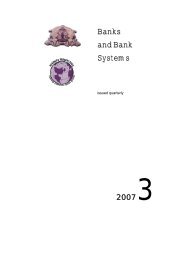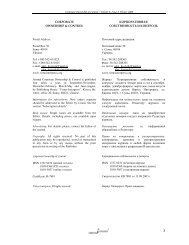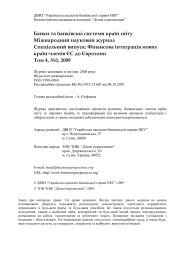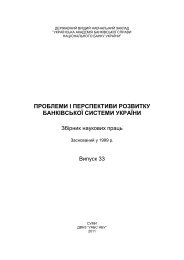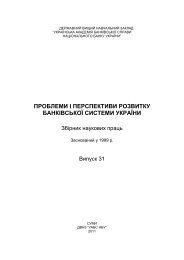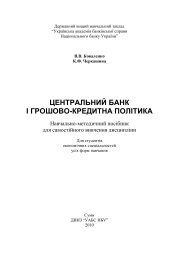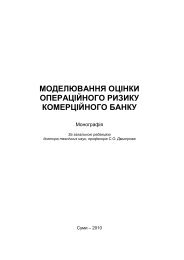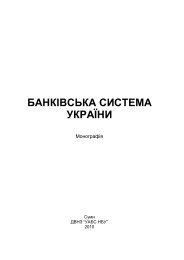BASEL II: PROBLEMS AND USAGE
BASEL II: PROBLEMS AND USAGE
BASEL II: PROBLEMS AND USAGE
You also want an ePaper? Increase the reach of your titles
YUMPU automatically turns print PDFs into web optimized ePapers that Google loves.
An aftermath of the crisis was the enactment of the Banking Ordinance<br />
of 1986, which became fully effective on September 1, 1988. The<br />
Ordinance strengthened the regulatory framework of the three-tier banking<br />
system and, more importantly, stipulated the minimum liquidity ratio and a<br />
minimum capital adequacy ratio of 8 %. Other international practices recommended<br />
by the Basel Committee were also adopted and enforced in subsequent<br />
years. The banking system has been quite stable for most of the<br />
time since the adoption of the Basel framework of banking supervision and<br />
the linked exchange rate system. This is particularly the case when compared<br />
with earlier banking development in the previous two decades. 45<br />
From this perspective, it can be argued that the stricter banking regulation<br />
has contributed to banking stability, because there has never been any systemic<br />
banking crisis in subsequent years (Leuven and Valencia 2008). Even<br />
the Asian Currency Crisis did not cause any bank or AI to fall through. 56<br />
In fact, the last bank failure in Hong Kong was the collapse of the Bank of<br />
Credit and Commerce International (BCCI) in 1991. 67<br />
Nonetheless, the collapse of BCCI triggered runs on Dao Heng Bank,<br />
Citibank and Standard Chartered Bank. Most people, particularly regulators,<br />
view bank runs as signs of banking instability, because bank runs are<br />
socially costly. More recently, there was a run on the BEA in September<br />
2008 shortly after the outbreak of the financial tsunami. Therefore, as far as<br />
bank runs are concerned, the banking system is not entirely immune from<br />
instability despite the implementation of the Basel regulatory framework.<br />
However, the latest run on BEA, however, may not necessarily be bad<br />
at all. On the contrary, it can be interpreted as a sign reflecting the fundamental<br />
soundness and stability of the Hong Kong banking system. First of<br />
all, the run was not contagious as it had not spread to other healthy banks<br />
and triggered a systemic panic. Instead, it can be viewed as an efficient run<br />
that exercises strong market discipline for enhancing overall banking stability<br />
in the longer run. One can say that unfounded malicious rumors were<br />
the culprits causing the run on BEA and also point the finger at rogue<br />
speculators. But the run was not entirely baseless. In fact, BEA had loans<br />
4 In its evolution into an international financial center, Hong Kong was occasionally<br />
hit by financial crises. Besides the banking crisis of 1982-1986, another system-wide<br />
banking crisis occurred in 1965 (see Jao 1974 for details), which led to the enactment of<br />
the Banking Ordinance of 1964. Prior to this regulatory reform, the Hong Kong banking<br />
system was highly unregulated, if not a pure free banking system (see, for example, Chu<br />
1996).<br />
5 A large investment bank, Peregrine, and a handful of stock brokerage firms did<br />
go bankrupt. However, they were not subject to the supervision within the Basel framework<br />
like banks.<br />
6 BCCI’s business in Hong Kong was solvent, although its overseas parent failed.<br />
50



